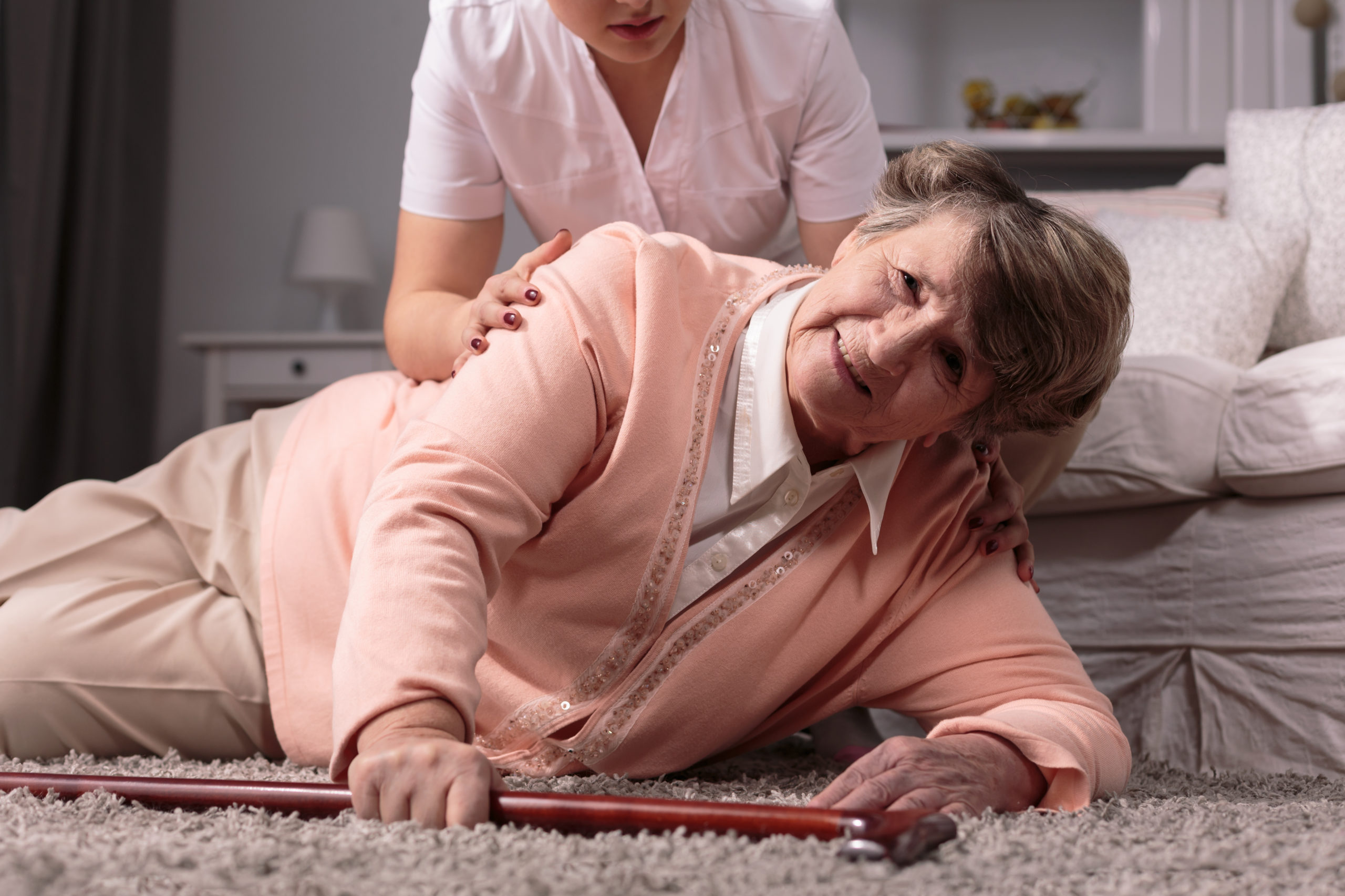Written by: Kate Sheehan, Occupational Therapist
A fall is defined as a unintentional move from a higher to a lower level, typically rapidly and without control, approximately 28-35% of people aged of 65 and over fall each year increasing to 32-42% for those over 70 years of age[1] the evidence also confirms that frequency of falls increases with age and with neurological conditions.
Factors that contribute to falls can be categorized into a number of areas; intrinsic, for example impaired balance or gait, a medical diagnosis of Parkinson’s Disease or dementia or postural hypotension; extrinsic such as clutter creating trip hazards, poor lighting or inappropriate walking aids and behavioral factors, including wearing poorly fitting shoes, reduced fluid intake or reduced physical activity.
There are a considerable number of complications that can ensue from lying on the floor for a long period of time, for example, pressure sores (often exacerbated by unavoidable incontinence), carpet burns, dehydration, hypothermia, pneumonia, and even death. We are also acutely aware that a fall can result in post- fall syndrome that includes confusion, dependence, loss of autonomy, immobilization and increased mental health issues, including depression, which will lead to a further reduction in carrying out daily activities.
As occupational therapists it is vital that we enable our clients to return to the their everyday activities that they do as individuals, in their families and within their communities to occupy their time and bring meaning and purpose to their life.[2] And therefore being able to review and recommend ways, which enable a person to get up from a fall in a timely manner are essential; this can be achieved in various ways,
- Teaching our clients to get up off the floor following a fall using the furniture around them, the support of a family member or health professional after it is determined there are no significant injuries
- A carer or family member using equipment to assist someone getting off the floor.
- Calling the emergency services.
The later is for occasions where there is an obvious injury or condition that requires medical intervention, the most important thing is to support the person to get up and to start doing things they want or need to do.
A person can be taught to get up off the floor safely, however if someone is falling on a regular basis, equipment can provide an easy and cost effective alternative to calling emergency services.
When recommending the correct equipment to support someone from prone to sitting it is essential we look at 3 key features
Accessibility – the product needs to be small enough to be easy to store and to able to be carried without difficulty by one person.
Easy to use – the product needs to be simple to use, with clear instructions and visual cues to make it quick to put together and therefore reduce the time a person is on the floor.
Confidence and comfort – the product must provide a supportive cushioned seating position to provide comfort and work reliably and quickly to provide the ultimate confidence in it.
The Camel by Mangar, is an inflatable lifting device, which is designed to provide all the key features above. When inflated, the Camel lifts the client into a raised seated position ready to stand with or without assistance. The benefit of the Camel is the client can sit, rest and regain their strength before moving to chair or to walk, thus allowing them to regain their confidence and continue with their chosen activities.
[1] http://www.who.int/ageing/publications/Falls_prevention7March.pdf?ua=1
[2] http://www.wfot.org/aboutus/aboutoccupationaltherapy/definitionofoccupationaltherapy.aspx




